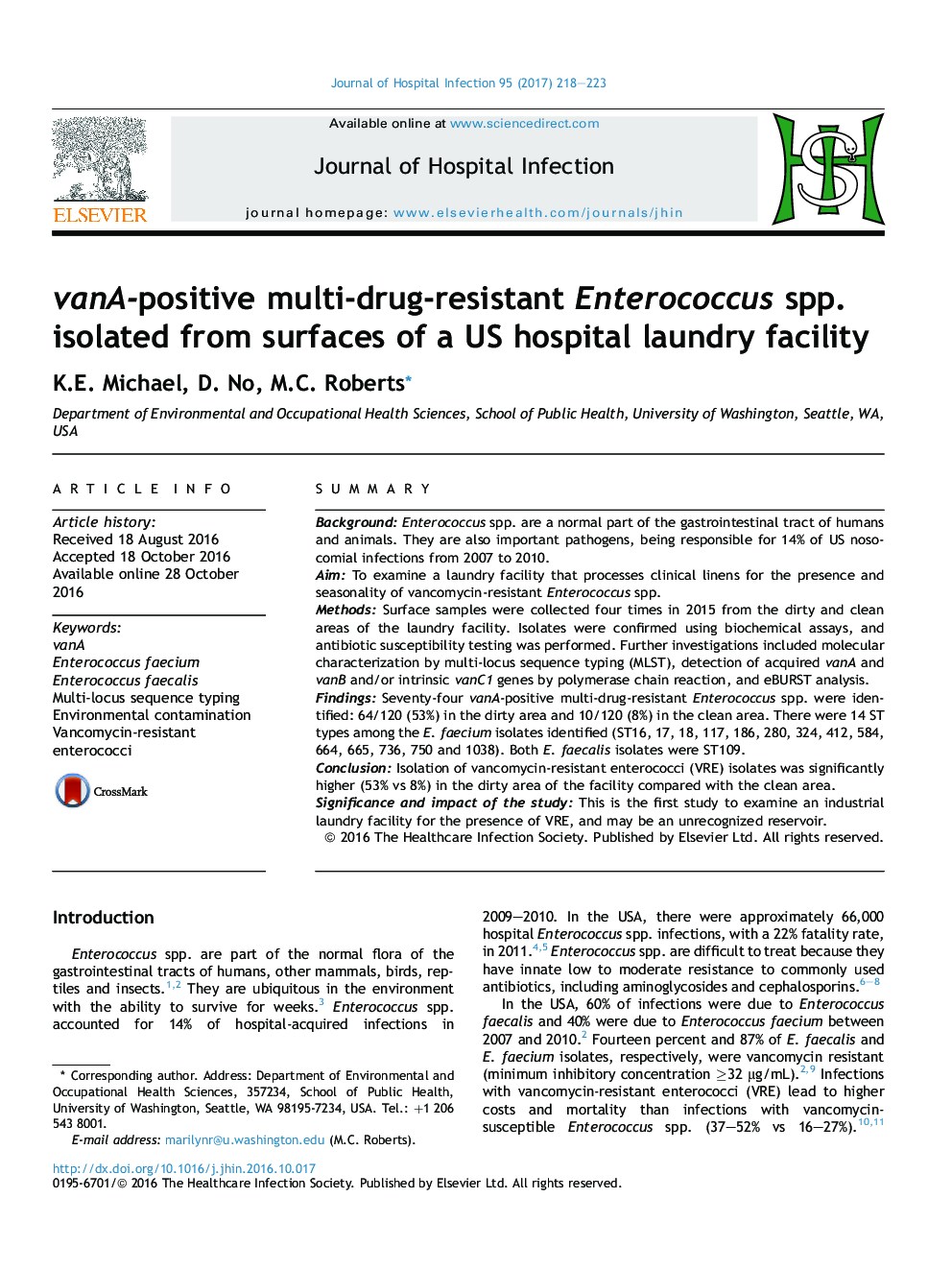| Article ID | Journal | Published Year | Pages | File Type |
|---|---|---|---|---|
| 5668402 | Journal of Hospital Infection | 2017 | 6 Pages |
SummaryBackgroundEnterococcus spp. are a normal part of the gastrointestinal tract of humans and animals. They are also important pathogens, being responsible for 14% of US nosocomial infections from 2007 to 2010.AimTo examine a laundry facility that processes clinical linens for the presence and seasonality of vancomycin-resistant Enterococcus spp.MethodsSurface samples were collected four times in 2015 from the dirty and clean areas of the laundry facility. Isolates were confirmed using biochemical assays, and antibiotic susceptibility testing was performed. Further investigations included molecular characterization by multi-locus sequence typing (MLST), detection of acquired vanA and vanB and/or intrinsic vanC1 genes by polymerase chain reaction, and eBURST analysis.FindingsSeventy-four vanA-positive multi-drug-resistant Enterococcus spp. were identified: 64/120 (53%) in the dirty area and 10/120 (8%) in the clean area. There were 14 ST types among the E. faecium isolates identified (ST16, 17, 18, 117, 186, 280, 324, 412, 584, 664, 665, 736, 750 and 1038). Both E. faecalis isolates were ST109.ConclusionIsolation of vancomycin-resistant enterococci (VRE) isolates was significantly higher (53% vs 8%) in the dirty area of the facility compared with the clean area.Significance and impact of the studyThis is the first study to examine an industrial laundry facility for the presence of VRE, and may be an unrecognized reservoir.
